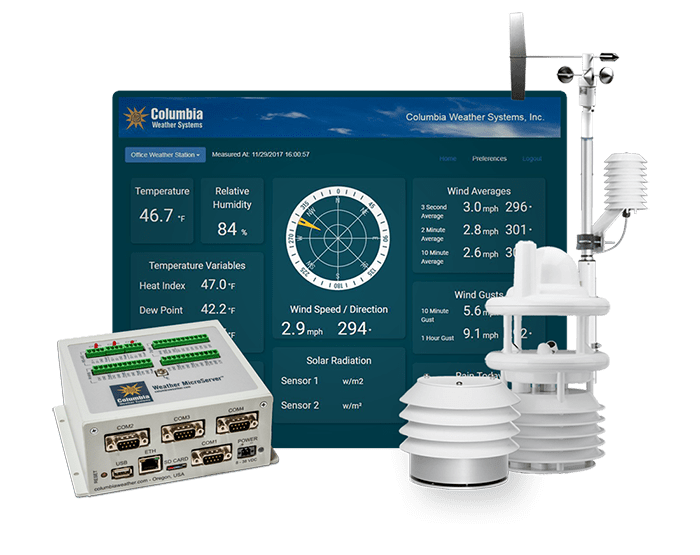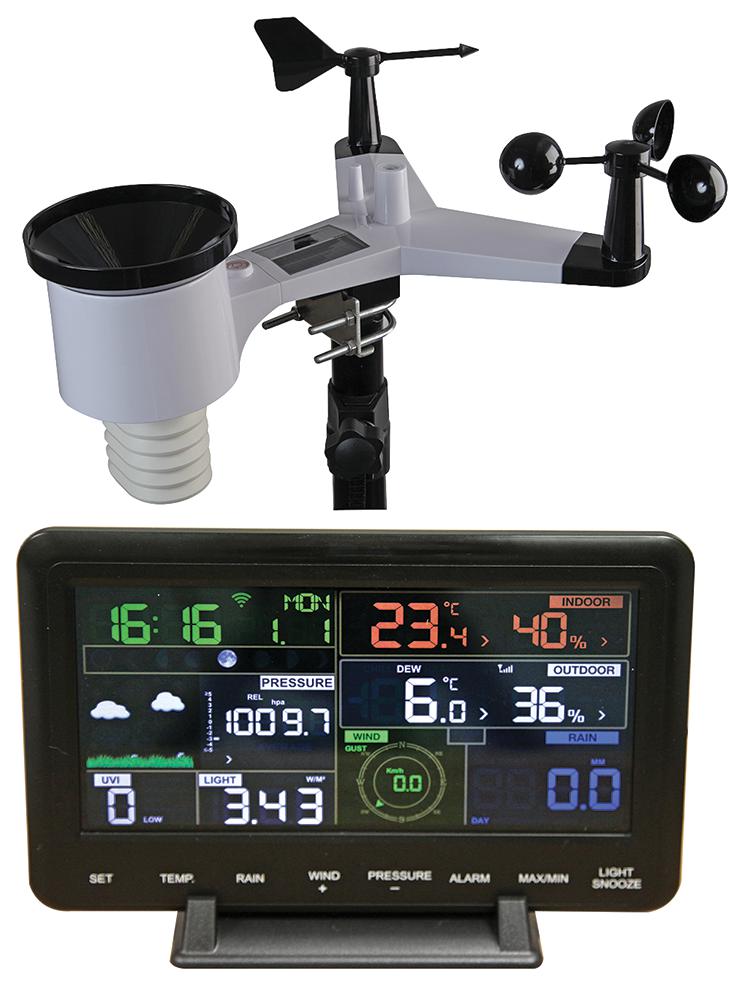The Ultimate Purchaser's Overview to Weather Stations: What You Required to Know
The Ultimate Purchaser's Overview to Weather Stations: What You Required to Know
Blog Article
Exploring the Various Kinds Of Expert Climate Stations for Accurate Data Collection
When it comes to selecting the appropriate climate terminal for data collection, the market offers a selection of alternatives tailored to different demands and settings. Let's check out the nuances of these specialist weather condition stations to grasp their one-of-a-kind functionalities and identify the best fit for details data collection requirements.
Digital Climate Stations
In the world of atmospheric instrumentation, digital climate terminals stick out as advanced devices for exact data collection and evaluation. These advanced terminals are geared up with sensing units that record a large range of climate specifications such as temperature, humidity, barometric stress, wind speed, and instructions. The data accumulated by electronic weather stations is sent wirelessly to a central console or a computer system for real-time monitoring and evaluation.
One of the crucial benefits of digital weather condition stations is their capability to provide high-resolution data with precision and reliability. This degree of accuracy is crucial for various applications, including farming, emergency situation, study, and aviation reaction. Digital weather stations commonly come with software program that permits users to visualize the data in different formats like charts and charts, facilitating easier interpretation and decision-making.
Wireless Weather Stations
Building on the capabilities of digital climate terminals, cordless climate terminals use improved comfort and versatility in data transmission and monitoring. By utilizing wireless technology, these weather terminals remove the requirement for troublesome wired connections, enabling easy installment in numerous places. The wireless feature enables real-time information surveillance from remote locations, giving meteorologists and weather condition lovers with instant access to crucial info.
Wireless weather condition stations typically contain sensors that accumulate information on temperature, humidity, barometric stress, wind speed, and instructions. These sensors wirelessly transmit the information to a central console or receiver, where it is refined and presented for analysis. Some progressed wireless weather terminals can even attach to the web, permitting individuals to access their weather data remotely by means of smartphones or computer systems.

Prosumer Weather Condition Terminals
What distinguishes Prosumer Weather condition Stations from typical consumer-grade weather condition terminals? Prosumer Weather Stations bridge the gap in between consumer-grade and professional-grade devices, using even more innovative attributes and greater precision than typical home weather stations. These stations are developed for weather condition lovers, amateur meteorologists, and small companies that need even more exact information than what customer designs can supply.
Prosumer Weather condition Stations commonly consist of a broader series of sensing units to determine extra atmospheric specifications such as UV index, leaf wetness, and soil moisture. They also tend to have a higher degree of resilience and reliability, making them suitable for long-term outdoor use in various environmental conditions.


Industrial Climate Stations
Industrial Climate Stations, likewise known as atmospheric monitoring systems, are specialized tools developed for specific and robust climate data collection in commercial settings. These terminals are customized to satisfy the one-of-a-kind demands of commercial operations where precise climate details is vital for safety and security, efficiency, and decision-making processes.
Industrial climate terminals are outfitted with advanced sensors that can determine a large range of atmospheric criteria such as temperature level, humidity, wind speed and direction, barometric pressure, and precipitation (Weather Stations). These stations are frequently ruggedly developed to stand up to extreme ecological problems commonly located in commercial settings
One trick attribute of commercial climate terminals is their capacity to supply real-time information tracking and evaluation. This enables commercial facilities to expect weather-related threats, enhance procedures based on climate condition, and ensure the safety of personnel and equipment. In addition, commercial climate stations can be integrated right into existing commercial control systems for smooth information administration and automation.
Portable Weather Terminals
In comparison to stationary industrial climate terminals, mobile weather condition stations supply adaptability and wheelchair for on-the-go data collection in various ecological settings. These compact devices are created to be quickly transferred to different places, making them optimal for field study, emergency website link situation response scenarios, farming, building websites, and outside events.
Mobile weather terminals usually consist of sensors for determining criteria such as temperature level, humidity, barometric stress, wind speed, and wind instructions. Some advanced versions may also feature added sensors for keeping an eye on rainfall, solar radiation, and UV degrees. In spite of read here their small size, mobile weather terminals can supplying exact and trustworthy information comparable to that of bigger, dealt with stations.
One of the crucial benefits of mobile climate terminals is their fast deployment and ease of configuration. Generally, mobile weather condition terminals are very useful tools for professionals requiring portable, accurate, and timely weather info in diverse settings.
Final Thought
In final thought, expert weather stations come in numerous kinds such as digital, wireless, prosumer, industrial, and mobile. By comprehending the differences in between these kinds of weather stations, people can make informed choices to guarantee they get the most trusted and specific weather condition information for their functions.
)))))
Structure on the capabilities of electronic weather terminals, wireless climate stations offer improved convenience and adaptability in data transmission and monitoring. Some progressed wireless weather condition stations can also link to the internet, permitting users to access their weather condition data remotely via computer systems or mobile phones.
Prosumer Climate Stations bridge the gap in between professional-grade and consumer-grade tools, offering even more innovative features and greater accuracy than normal home weather stations. Weather Stations. On the whole, portable weather condition terminals are indispensable devices for professionals requiring portable, browse this site precise, and prompt weather information in diverse settings
By recognizing the differences between these types of weather condition stations, people can make informed choices to ensure they get the most exact and reputable climate data for their purposes.
Report this page